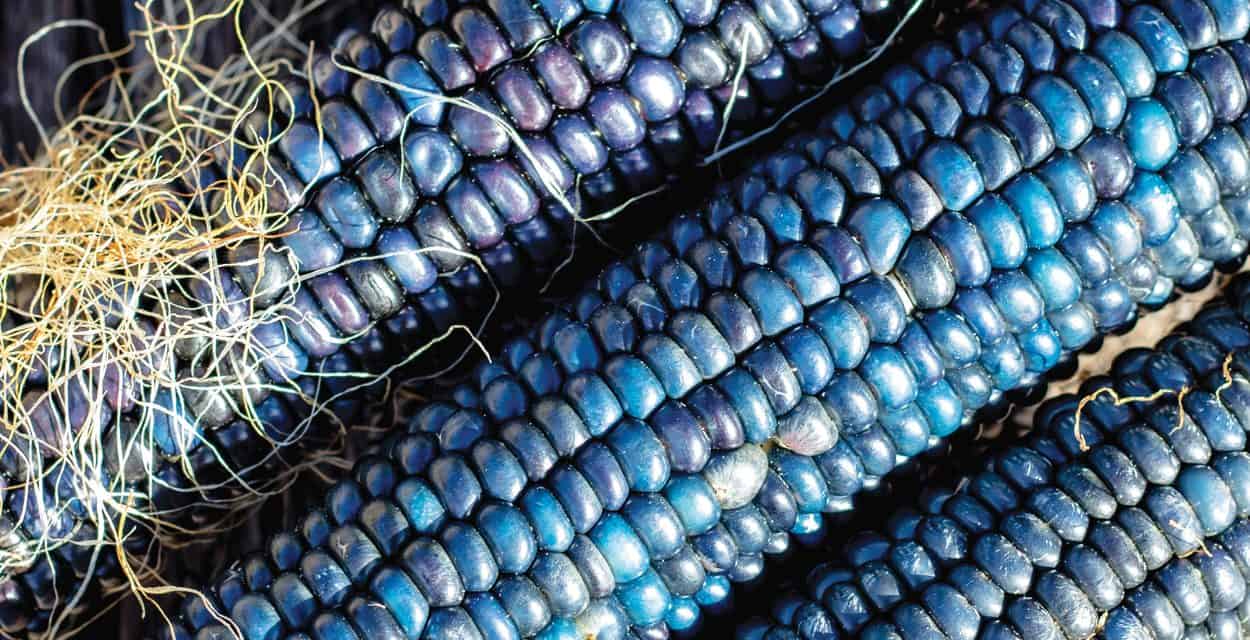
What makes blue corn unique? Blue corn stands out not just for its striking color but also for its nutritional benefits. Unlike yellow or white corn, blue corn contains anthocyanins, which are antioxidants that give it that vibrant hue. These antioxidants help fight inflammation and may reduce the risk of chronic diseases. Blue corn also boasts a higher protein content and a lower glycemic index, making it a healthier option for those watching their blood sugar levels. Additionally, it has a richer, nuttier flavor compared to its more common counterparts. Whether you're munching on blue corn tortilla chips or enjoying a hearty blue cornmeal pancake, this colorful grain offers a tasty and nutritious twist.
Key Takeaways:
- Blue corn, also known as Hopi maize, is a unique grain with a distinct blue hue and a slightly sweeter, nuttier flavor compared to yellow or white corn. It is rich in protein and packed with essential minerals, making it a nutritious and delicious addition to any diet.
- Blue corn holds cultural significance for Native American tribes, symbolizing life and sustenance. It is used in ceremonial dishes and rituals, and its traditional farming methods and culinary uses make it a versatile and cherished ingredient in various dishes.
What is Blue Corn?
Blue corn, also known as Hopi maize, is a variety of flint maize grown in the Southwestern United States. It has a distinct blue hue and is a staple in Native American cuisine. Here are some fascinating facts about this unique grain.
-
Blue corn gets its color from anthocyanins, which are natural pigments with antioxidant properties.
-
This corn variety is a staple in traditional Hopi and Pueblo diets, often used to make piki bread and blue corn mush.
-
Blue corn has a slightly sweeter and nuttier flavor compared to yellow or white corn.
-
It is rich in protein, containing 20-30% more protein than modern yellow corn.
Nutritional Benefits of Blue Corn
Blue corn isn't just visually appealing; it also packs a nutritional punch. Let's dive into some of its health benefits.
-
Blue corn is high in fiber, which aids in digestion and helps maintain a healthy gut.
-
The anthocyanins in blue corn have anti-inflammatory properties, which can help reduce the risk of chronic diseases.
-
It is a good source of essential minerals like magnesium, zinc, and iron.
-
Blue corn contains more lysine, an essential amino acid, than other corn varieties.
Cultural Significance of Blue Corn
Blue corn holds a special place in the cultures of Native American tribes. Its significance goes beyond just being a food source.
-
The Hopi people consider blue corn to be a symbol of the earth and sky, representing life and sustenance.
-
Blue corn is often used in ceremonial dishes and rituals, highlighting its spiritual importance.
-
Traditional farming methods for blue corn involve dry farming, which relies on natural rainfall rather than irrigation.
-
The process of making piki bread from blue corn is a time-honored tradition passed down through generations.
Culinary Uses of Blue Corn
Blue corn's unique flavor and texture make it a versatile ingredient in various dishes. Here are some ways it is used in cooking.
-
Blue cornmeal is commonly used to make tortillas, giving them a distinctive color and taste.
-
Blue corn chips are a popular snack, often enjoyed with salsa or guacamole.
-
Blue corn can be ground into flour and used in baking, adding a unique twist to muffins, pancakes, and bread.
-
It is also used to make atole, a traditional Mexican hot beverage thickened with cornmeal.
Growing and Harvesting Blue Corn
Growing blue corn requires specific conditions and techniques. Here are some interesting facts about its cultivation.
-
Blue corn is typically planted in late spring and harvested in early fall.
-
It thrives in well-drained soil with plenty of sunlight, making the Southwestern United States an ideal location for its growth.
-
Traditional methods of growing blue corn involve planting it in mounds, which helps retain moisture and provides better support for the stalks.
-
The ears of blue corn are usually smaller than those of yellow corn, but they are packed with more nutrients and flavor.
The Final Scoop on Blue Corn
Blue corn isn't just a pretty face. Packed with antioxidants, it offers more than just a pop of color. This ancient grain has been a staple in Native American diets for centuries, providing essential nutrients and a unique flavor. It's got more protein and fiber than yellow corn, making it a healthier choice for your meals. Plus, its low glycemic index means it won't spike your blood sugar. Whether you're making tortillas, chips, or even pancakes, blue corn adds a nutritious twist. So next time you're at the store, grab some blue corn products and give them a try. Your taste buds and your body will thank you.
Frequently Asked Questions
Was this page helpful?
Our commitment to delivering trustworthy and engaging content is at the heart of what we do. Each fact on our site is contributed by real users like you, bringing a wealth of diverse insights and information. To ensure the highest standards of accuracy and reliability, our dedicated editors meticulously review each submission. This process guarantees that the facts we share are not only fascinating but also credible. Trust in our commitment to quality and authenticity as you explore and learn with us.


